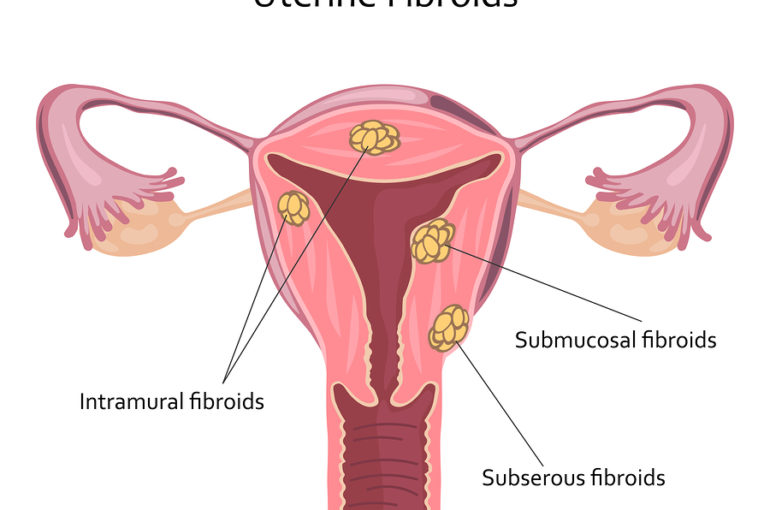Understanding Uterine Fibroids and Fertility
Understanding Uterine Fibroids and Fertility

Introduction
Fibroids are becoming a growing concern due to their widespread prevalence.Statisticsreveal that 20 to 25% of women of reproductive age are affected by fibroids, and by the age of 50, up to 80% of black women will have them. Since most of these women are in their reproductive age, there’s a lot of concern about how fibroids will impact their chances of having a baby. In this article, we’ll be discussing the types of fibroids, their relationship with fertility, and advanced treatment options likeHIFU (High Intensity Focused Ultrasound) that can preserve a woman’s fertility.
What are uterine fibroids?
Uterine fibroids, also called leiomyomas, are a common type of benign tumours that grow in and on the uterus (womb). These growths are made of fibrous tissues like muscles, and while they are generally not cancerous, they can cause various symptoms and complications depending on their size and location.
Causes of fibroids.
The exact cause of fibroids are unknown, however some factors are believed to contribute to their growth:
- Hormones: The female reproductive hormones, estrogen and progesterone, appear to play a significant role in the growth of fibroids.
- Genetics: Fibroids tend to run in families, suggesting they may be hereditary
Types of uterine fibroids
There are three main types of fibroids
- Submucous Fibroid: It grows inside the uterus, in the endometrium where the baby stays.
- Intramural Fibroid: It grows between the muscles of the uterus.
- Subserosal Fibroid: It grows outside the uterus. As they grow larger, they can cause pain due to their size or pressure put on a nearby organ.
Subserosal and submucosal fibroids can be attached to the uterine wall by a stalk-like growth called a peduncle. These fibroids are calledpedunculated fibroids.
Symptoms of Fibroids
Many women with fibroids never know they have fibroids because they do not show symptoms. However, the growth in the size of tumour, the location and the number of fibroids can lead to the following symptoms:
- Heavy menstrual flow: Many women with fibroids experience heavy bleeding between or during periods.
- Painful and prolonged periods: Fibroids can lead to painful periods, and may cause menstrual cycle to last longer than usual.
- Abdominal/pelvic pain
- Pain during sex
- Frequent urination: Because of the size of these tumours, they compress and affect the organ surrounding the uterus like the bladder, making the patient pass water frequently at times.
- It can also result in recurrent miscarriage, preterm labour, bleeding in between periods and malpresentation. Malpresentation can affect delivery making the baby not being able to come out with the head downwards, it either comes out with the buttocks or any other part of the body.
- Increased abdominal enlargement causing you to look pregnant
Diagnosis of fibroid
Fibroid can be diagnosed with different methods; examples are physical imaging (ultrasound), magnetic resonance imaging (MRI) and hysteroscopy.
Intersection between Fibroids and Infertility
Fibroids on their own rarely cause infertility. According to The American Society for Reproductive Medicine, fibroids are present in about 5-10% of women suffering from infertility, but as a sole cause of infertility, fibroids only account for 1% – 2.4%. Uterine fibroids can cause infertility in the following ways:
- Blocked fallopian tubes (the tubes entering the uterus): Fibroids can block the fallopian tubes, making it harder for eggs to meet sperm or for fertilized eggs to reach the uterus.
- Large fibroids can occupy space in the uterus where the baby is supposed to be. This is especially common with submucosal fibroids.
- Cervical Changes: Fibroids can change the shape of the cervix, which can limit how many sperm enter the uterus.
- Reduced Blood Flow: They may reduce blood flow to the uterus, making it harder for an embryo to stick and grow.
Fibroids rarely cause infertility but can increase the risk of pregnancy losses, so thorough assessment should be carried out before any conclusions.
Treatment options for fibroids.
- HIFU:HIFU is an advanced, non-invasive procedure designed to treat uterine fibroids. It involves using high intensity ultrasound waves to generate localized heat to specifically target and destroy fibroids cells without harming surrounding healthy tissue. This precision preserves the structure and function of the uterus, maintaining a woman’s fertility.
- Myomectomy : The surgery to remove fibroids is known as myomectomy. Your gynaecologist will tell you whether the procedure is right for you. Myomectomies are usually an effective treatment for fibroids, but there’s a chance the fibroids will grow back. Types of myomectomies include:
- Hysteroscopic myomectomy
- Laparoscopic myomectomy
- Abdominal myomectomy
- Uterine Artery Embolization (UAE): In this procedure, tiny particles (small plastic or gelatin particles) are injected into the blood vessels that lead to the uterus. The particles cut off the blood flow to the fibroids, causing it to shrink.
Conclusion
There is no doubt that fibroids affect fertility, but as the sole cause of infertility, that is rare. The size, location and numbers of fibroids will determine how fibroids will affect a woman’s chances of having a baby. However, because the treatment of uterine fibroid itself might lead to infertility and difficulty in the treatment of infertility; it is always advisable to tread with caution.
If you’re planning on having children, it is important to speak to your doctor to understand the specific kind of fibroids you have, and the best treatment option to preserve your fertility.



